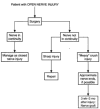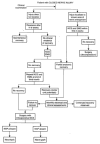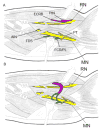Management of nerve gaps: autografts, allografts, nerve transfers, and end-to-side neurorrhaphy
- PMID: 19348799
- PMCID: PMC2849924
- DOI: 10.1016/j.expneurol.2009.03.031
Management of nerve gaps: autografts, allografts, nerve transfers, and end-to-side neurorrhaphy
Figures


















References
-
- Amr SM, Moharram AN. Repair of brachial plexus lesions by end-to-side side-to-side grafting neurorrhaphy: experience based on 11 cases. Microsurgery. 2005;25:126–146. - PubMed
-
- Anderson PN, Turmaine M. Peripheral nerve regeneration through grafts of living and freeze-dried CNS tissue. Neuropathol Appl Neurobiol. 1986;12:389–399. - PubMed
-
- Beaulieu JY, Blustajn J, Teboul F, Baud P, De Schonen S, Thiebaud JB, Oberlin C. Cerebral plasticity in crossed C7 grafts of the brachial plexus: an fMRI study. Microsurgery. 2006;26:303–310. - PubMed
-
- Bertelli JA, Ghizoni MF. Nerve repair by end-to-side coaptation or fascicular transfer: a clinical study. J Reconstr Microsurg. 2003;19:313–318. - PubMed
Publication types
MeSH terms
Grants and funding
LinkOut - more resources
Full Text Sources
Other Literature Sources
Medical

